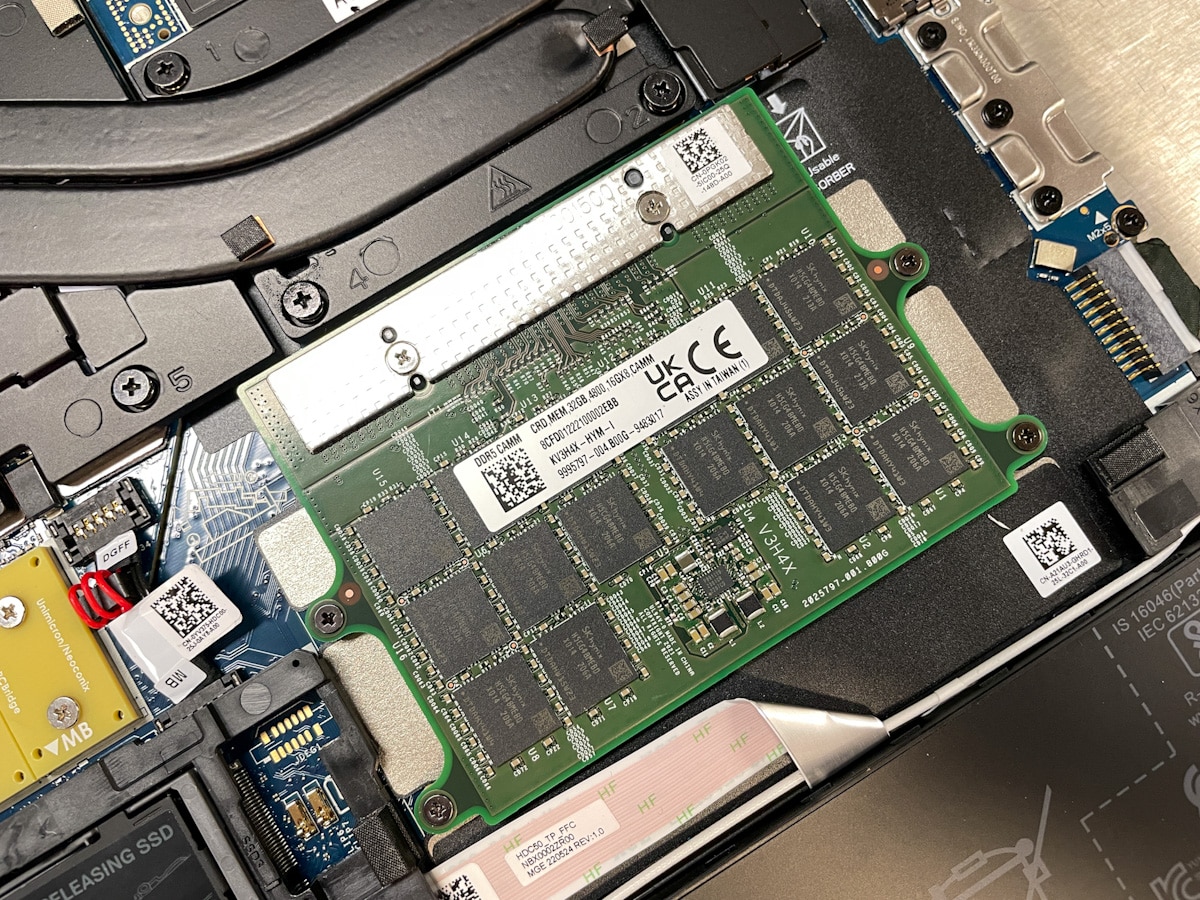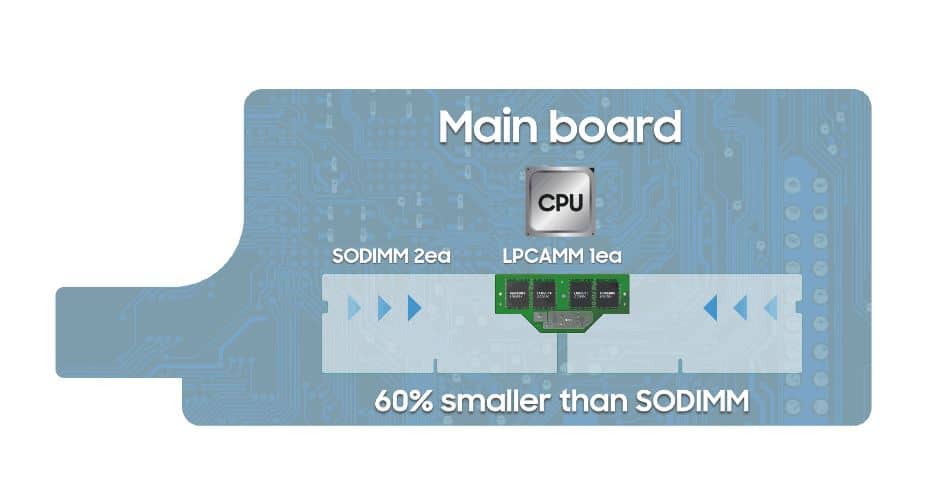Samsung Electronics has announced the creation of the industry’s first Low Power Compression Attached Memory Module (LPCAMM). This groundbreaking technology has the potential to redefine the DRAM market for PCs, laptops, and possibly even data centers. Notably, Samsung’s LPCAMM comes on the heels of Dell’s own Compression Attached Memory Module (CAMM) technology, which has already started making waves in the high-end laptop industry.
Samsung Electronics has announced the creation of the industry’s first Low Power Compression Attached Memory Module (LPCAMM). This groundbreaking technology has the potential to redefine the DRAM market for PCs, laptops, and possibly even data centers. Notably, Samsung’s LPCAMM comes on the heels of Dell’s own Compression Attached Memory Module (CAMM) technology, which has already started making waves in the high-end laptop industry.
Our previous coverage emphasized the importance of Dell’s CAMM as an emerging JEDEC standard, designed to replace or augment SODIMM memory in laptops and small computing devices. CAMM tackles the limitations of SODIMMs by offering higher-capacity modules that scale from 16GB to 128GB. Moreover, CAMM brings efficiency to laptop design, eliminating the need to install memory on both sides of the motherboard. It simplifies the often-convoluted process of upgrading laptop memory, allowing users to replace a single module rather than navigating through a labyrinth of components.
Samsung’s LPCAMM introduces some new changes, most importantly its compatibility with Intel’s platform following successful system verification. This ensures that LPCAMM is geared for real-world applications and a broader partner ecosystem. The module is set for testing with next-generation systems with major customers this year, and commercialization is anticipated for 2024.

Dell CAMM DDR5 memory module
Samsung’s 7.5Gbps LPCAMM not only validates the CAMM design but also adds its own innovative features. Similar to CAMM, LPCAMM is a detachable module offering enhanced flexibility for PC and laptop manufacturers. However, LPCAMM ups the ante by promising up to 50% improvement in performance and 70% in power efficiency, all the while occupying 60% less space on the motherboard compared to SODIMMs. Samsung’s announcement also creates room for future adoption and innovation, opening the possibility for LPCAMM to become the go-to solution for data centers and servers.
What makes this announcement so important is the shared vision both Dell and Samsung offer for the future of computing memory. CAMM technology was touted for its consumer-friendly design, allowing for easier upgrades. Samsung’s LPCAMM mirrors this, offering greater convenience for end-users.
For CAMM to succeed, it requires broad industry adoption. Samsung’s LPCAMM looks set to provide that momentum, promising a future where CAMM could reshape the memory landscape, offering improved performance, efficiency, and user-friendliness. And with Samsung now joining Dell, it’s hard to imagine it will take much more time for other DRAM players and systems manufacturers to get involved.
Engage with StorageReview
Newsletter | YouTube | Podcast iTunes/Spotify | Instagram | Twitter | TikTok | RSS Feed

